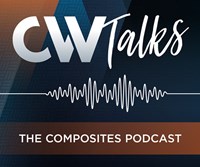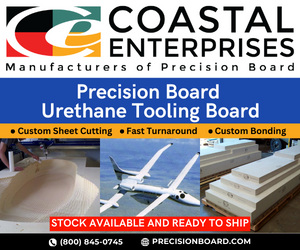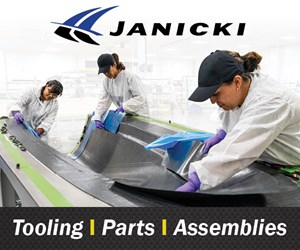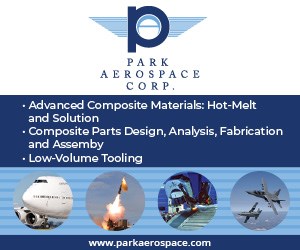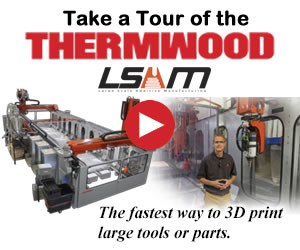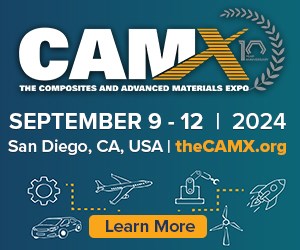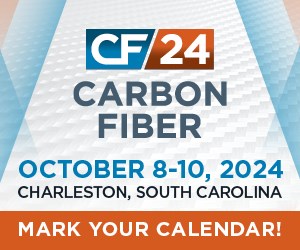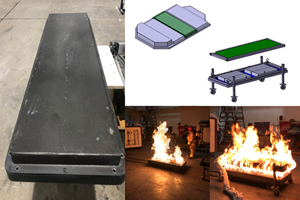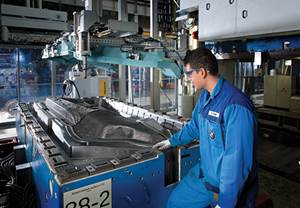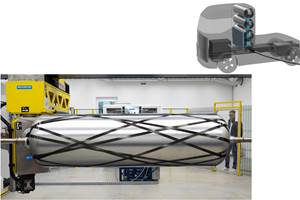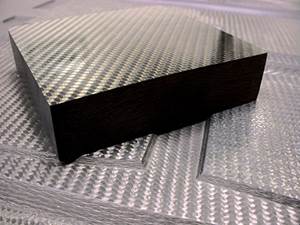The R&D we don't see
Shedding light on unrecognized composites manufacturing innovation.

In an early December 2019 episode of Freakonomics, Dubner explores the hidden innovation economy. Dubner argues that although large firms, universities and government institutions get much (deserved) credit for the products and technologies that emerge from their research and development (R&D) work, there is another group that also innovates, but does so with little or no recognition. This group, called household innovators, is composed of garage inventors, tinkerers and problem-solvers whose homemade creations and solutions go largely unnoticed.
Eric von Hippel, a professor at the Massachusetts Institute of Technology (MIT) Sloan School of Management, estimates that Americans invest more than $41 billion annually in household innovation — an investment that is unrecognized by traditional economic measuring tools. Further, von Hippel says this represents about half of what large organizations invest annually in R&D.
All of this got me to thinking about innovation in the composites community. If you are a subscriber to and reader of the CompositesWorld Today newsletter, you know that it’s not unusual to occasionally learn of the establishment of an R&D or technical center by any of the larger firms that work in the composites industry. These include fiber manufacturers, resin suppliers, large fabricators, OEMs, governments or academic institutions.
Such technical centers are typically created to build a critical mass of talent, creativity and expertise focused on developing and commercializing technology that solves customer problems. These efforts, and the innovations they produce, are vital and necessary to the evolution and maturation of composites.
If you have a creative solution you want to share with the world of composites, I would like to hear about it.
However, in the same way that household innovators go largely unrecognized in the broader economy, it’s fair to say that there is also composites innovation that goes unrecognized. In our reporting on the materials and technologies shaping the composites industry, I and other editors on the CW staff often visit composites manufacturing facilities. On our plant tours, we of course see and hear much about how people and operations are managed — everything from equipment deployment to material inventory management to process and quality control. One big source of pride for many fabricators is the quality of their product, usually expressed in QC pass rate, on-time delivery or a similar metric.
We also hear anecdotal stories, about how operators, engineers, designers and other workers have solved problems. These are not the grand problems that challenge the industry, but the irritating, frustrating day-in/day-out problems that plague workflow and harm product quality — problems that are solved by employees who are given the opportunity to explore creative solutions. These innovations range from a minor modification to an existing tool or piece of machinery, to a bit of software or code that enhances a process.
Such innovation is rarely done by people trained to innovate, but by everyday employees who are passionate about what they do and, just as important, work in an environment that encourages their intellectual investment in the tasks they perform. The result is a willingness to seek and develop solutions that help make that plant a little more efficient and the products a little bit better.
I am sure that you are aware of such innovation where you work, and perhaps you yourself have innovated. It’s also a pretty good bet that your innovation, as important as it might be to you or your employer, has gone unrecognized by the larger composites industry. Perhaps this is OK, but it’s also possible that your innovation has application beyond the world in which you work. In any case, if you have a creative solution you want to share with the world of composites, I would like to hear about it. Email me at jeff@compositesworld.com and tell me how you have innovated on the job to solve a taxing problem. We will aggregate the innovations and publish the notable ones here in CW.
Related Content
Price, performance, protection: EV battery enclosures, Part 1
Composite technologies are growing in use as suppliers continue efforts to meet more demanding requirements for EV battery enclosures.
Read MoreMaterials & Processes: Fabrication methods
There are numerous methods for fabricating composite components. Selection of a method for a particular part, therefore, will depend on the materials, the part design and end-use or application. Here's a guide to selection.
Read MoreCryo-compressed hydrogen, the best solution for storage and refueling stations?
Cryomotive’s CRYOGAS solution claims the highest storage density, lowest refueling cost and widest operating range without H2 losses while using one-fifth the carbon fiber required in compressed gas tanks.
Read MoreMaterials & Processes: Resin matrices for composites
The matrix binds the fiber reinforcement, gives the composite component its shape and determines its surface quality. A composite matrix may be a polymer, ceramic, metal or carbon. Here’s a guide to selection.
Read MoreRead Next
CW’s 2024 Top Shops survey offers new approach to benchmarking
Respondents that complete the survey by April 30, 2024, have the chance to be recognized as an honoree.
Read MoreFrom the CW Archives: The tale of the thermoplastic cryotank
In 2006, guest columnist Bob Hartunian related the story of his efforts two decades prior, while at McDonnell Douglas, to develop a thermoplastic composite crytank for hydrogen storage. He learned a lot of lessons.
Read MoreComposites end markets: Energy (2024)
Composites are used widely in oil/gas, wind and other renewable energy applications. Despite market challenges, growth potential and innovation for composites continue.
Read More




